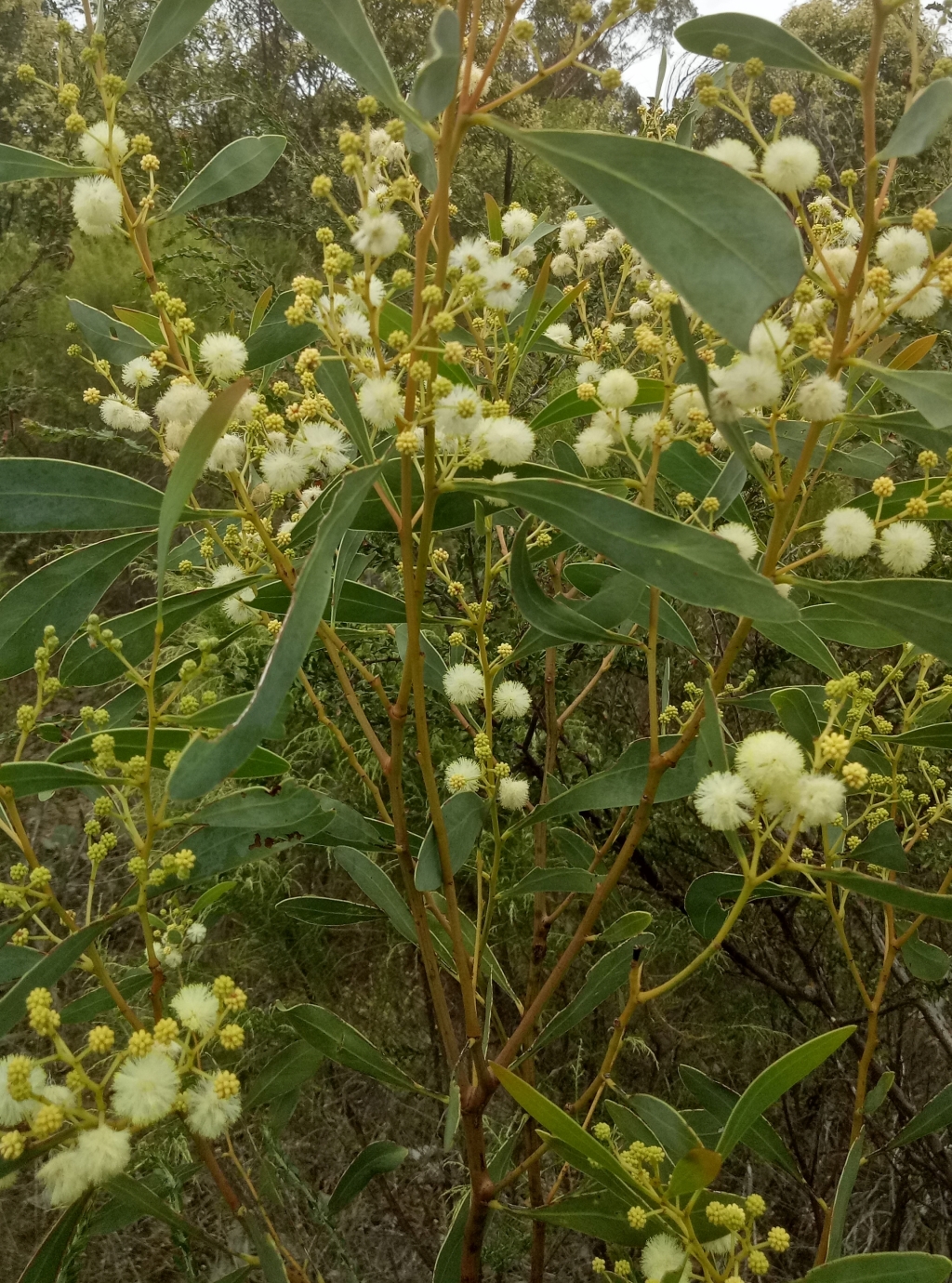Acacia penninervis var. penninervis
Hickory WattleShrub or small tree, to 8 m high; branchlets glabrous. Phyllodes variable, oblanceolate to narrowly elliptic, narrowed at base, 5–13 cm long, 5–30 mm wide, usually more or less straight, rarely falcate, glabrous, green, infrequently glaucous, obtuse or acute; finely and pinnately veined, midrib and marginal veins prominent; gland 0.5–3 cm above pulvinus, margin often shallowly indented at gland which is connected to midrib by a fine oblique vein. Racemes sometimes in panicles; rachis 3–12 cm long, glabrous; peduncles 4–8 mm long, glabrous; heads globular, 15–30-flowered, cream to whitish. Flowers 5-merous; sepals united. Pods to 20 cm long, 10–17 mm wide, thinly coriaceous to firmly chartaceous; seeds longitudinal, oblong to elliptic, 6–7 mm long, slightly shiny, black, funicle dark red, aril clavate. Flowers Nov.–Feb.
VRiv, CVU, EGL, EGU, HSF, HNF. Also Qld, NSW, ACT. Confined to mostly rocky habitats along the eastern highlands of Australia, extending southward into an area north-west of Mt Tingaringy in far East Gippsland, with a few outlying pockets further westward on and near the Strathbogie Ranges.
Usually characterized by the indented gland connected to the midrib by a fine oblique vein. Often confused with Acacia falciformis which is usually a larger plant distinguished especially by the usually golden, appressed-hairy peduncles and raceme axes and larger flowers. Also similar to A. obliquinervia and A. sporadica (see note after A. sporadica).
Entwisle, T.J.; Maslin, B.R.; Cowan, R.S.; Court, A.B. (1996). Mimosaceae. In: Walsh, N.G.; Entwisle, T.J., Flora of Victoria Vol. 3, Dicotyledons Winteraceae to Myrtaceae, pp. 585–658. Inkata Press, Melbourne.
 Spinning
Spinning

